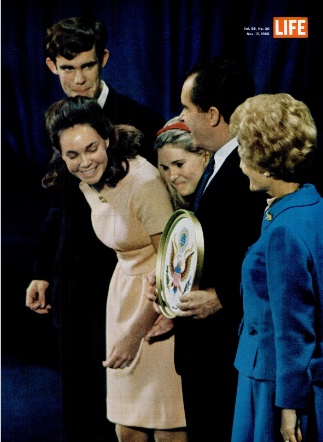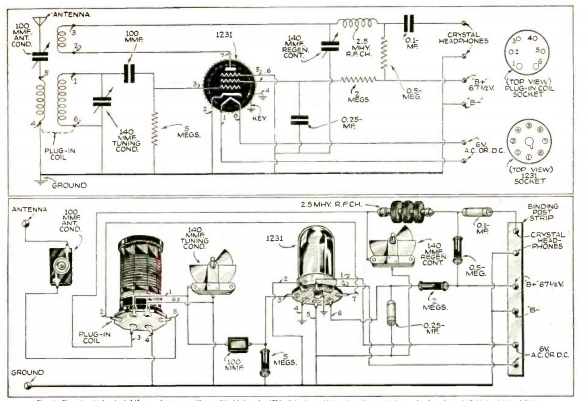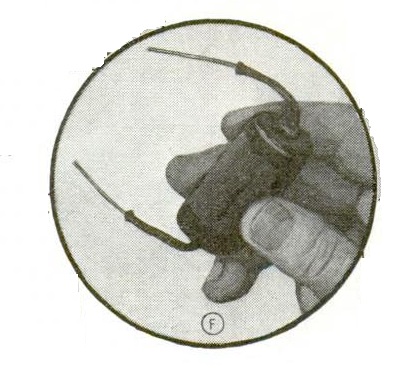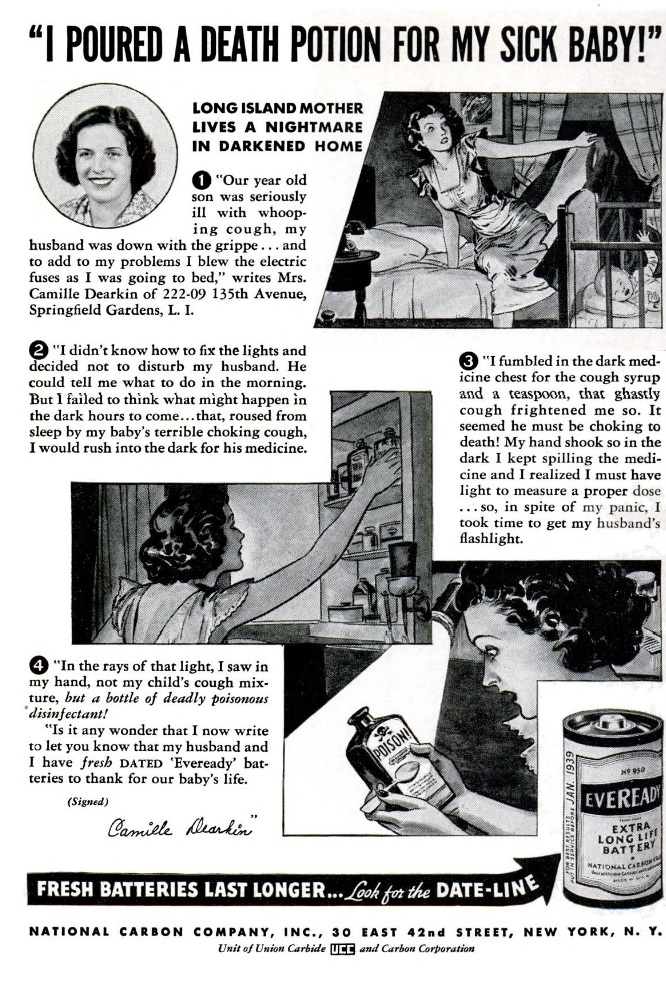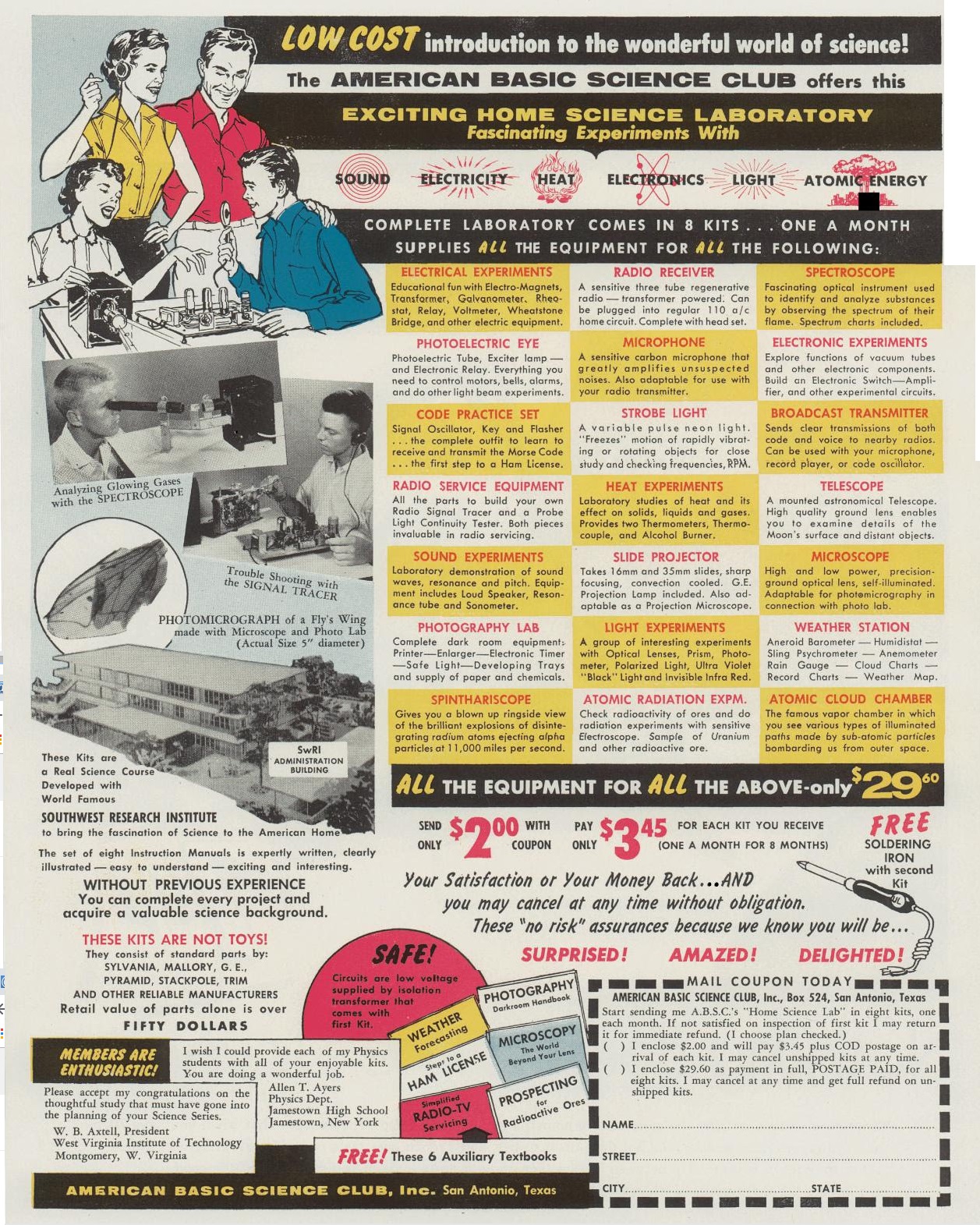 This ad for the American Basic Scientific Club appeared inside the back cover of Boys’ Life 60 years ago this month, November 1958. For only $3.45 each, the club would send one scientific kit per month for eight months, each containing an interesting project on subject such as radio, meteorology, atomic energy, and photography. At the end of eight months, the student would have a working regenerative receiver, signal tracer, code practice oscillator, darkroom (including enlarger), and many other scientific instruments.
This ad for the American Basic Scientific Club appeared inside the back cover of Boys’ Life 60 years ago this month, November 1958. For only $3.45 each, the club would send one scientific kit per month for eight months, each containing an interesting project on subject such as radio, meteorology, atomic energy, and photography. At the end of eight months, the student would have a working regenerative receiver, signal tracer, code practice oscillator, darkroom (including enlarger), and many other scientific instruments.
I don’t recall hearing about this club, which was apparently in decline by the 1970s when I would have been interested. There’s an interesting history of the club at this website, written by the son of the founder. And a picture of the three-tube regenerative receiver, along with a partial schematic, can be found at this link. The set appears to be mounted on a chassis made of a single piece of metal, mounted on the cardboard box in which the kit arrived. It does have a power transformer, making it relatively safe for the young experimenter.
One of the books included with the kits was a guide to obtaining a ham radio license. It appears that the receiver could be built for either the AM broadcast band or 80 meters, meaning that it probably made a workable receiver for a new novice.

